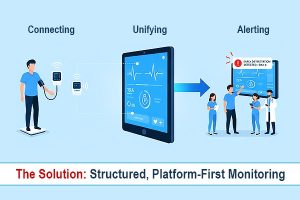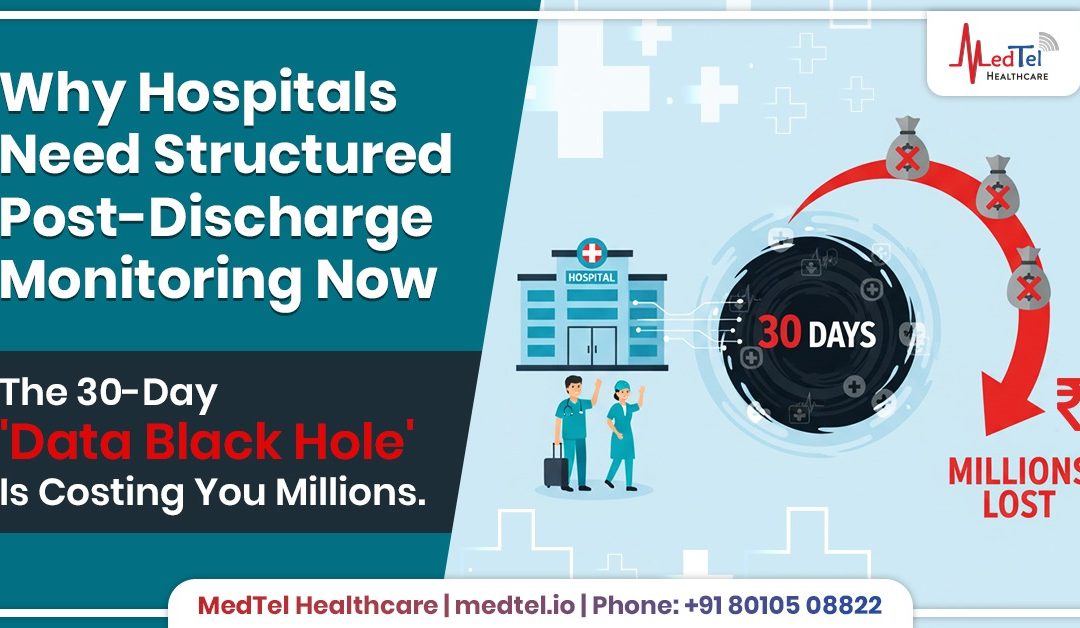The 30-Day ‘Data Black Hole’ Is Costing You Millions.
For hospital leaders, a patient’s discharge is not the end of care. It’s the beginning of the most financially and clinically high-risk period: the 30-day “data black hole.”
When a patient leaves your hospital, your visibility into their health often drops to zero. But your responsibility—and your financial risk—does not. This 30-day gap is precisely where minor complications become full-blown emergencies, leading directly to patient readmissions.
These readmissions are not just a failure in the care continuum; they are a multi-billion dollar drain on the healthcare system, triggering severe financial penalties and impacting quality-of-care scores.
The Problem: A System Failure, Not a Clinical One
This post-discharge gap isn’t a failure of your clinical teams. It’s a failure of fragmented systems.
Your EMR holds the patient’s in-hospital data. A separate app might hold their prescription data. A third device might track their vitals. But none of these systems talk to each other, and none of them provide your team with a single, actionable view of the patient’s status after they’ve gone home.
Without a unified data stream, you are essentially flying blind. You are reacting to an emergency room visit instead of preventing it.
The Solution: Structured, Platform-First Monitoring
“Structured Post-Discharge Monitoring” is the solution. This is not a sporadic, manual follow-up call. It is an automated, scalable operational strategy built on a unified “Digital Backbone.”

It works by:
- Connecting: Giving the recently discharged patient a simple kit of connected devices (e.g., blood pressure cuff, pulse oximeter, scale).
- Unifying: Feeding all that data onto a single platform in real-time.
- Alerting: Using smart rules to automatically alert your clinical team to the earliest signs of deterioration, days before the patient would feel the need to go to the ER.
Real-World Use Cases: From Surgical to Medical
This isn’t just theory. This is how you create immediate operational and financial impact.
- Surgical Example: A patient is discharged after a major abdominal surgery. At home, the platform monitors their vitals and (via patient photo) their wound. An elevated temperature and heart rate on Day 3—long before the patient feels “sick”—triggers an alert. Your team intervenes with a telehealth call and an antibiotic prescription, preventing a severe post-operative infection and a costly readmission.
- Medical Example: A patient with Congestive Heart Failure (CHF)—a leading cause of readmissions—is sent home. The platform tracks their daily weight and blood pressure. A 3-pound weight gain in 48 hours is an immediate, objective sign of fluid retention. The system flags it, your team intervenes with a diuretic adjustment, and a multi-day hospital stay is avoided.
The Bottom Line: From “Data Black Hole” to “Controlled Care”
Structured Post-Discharge Monitoring is not another “IT project.” It is a core financial and operational strategy.
It is the most direct way to close the 30-day “data black hole,” reduce your readmission penalties, and prove to patients that your standard of care follows them all the way home.
It transforms patient discharge from a point of high risk to a controlled, data-rich part of the care continuum.
Ready to close the data gap and take control of your readmission rates? Book a demo to see how our RPM platform can be activated for your post-discharge program in under 30 days.
